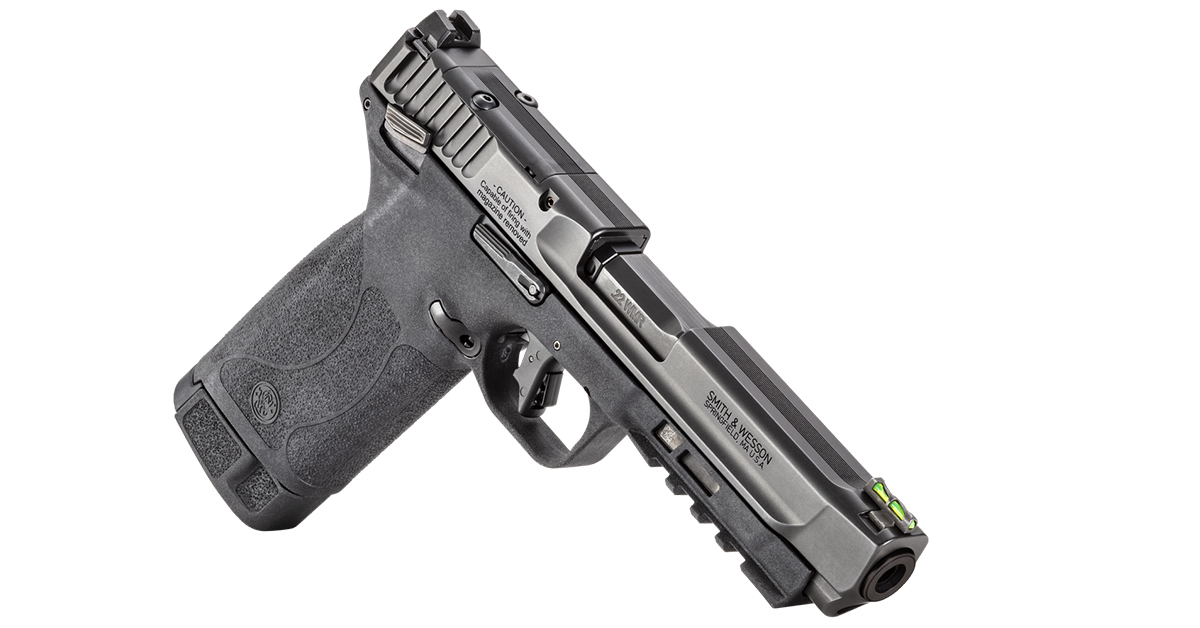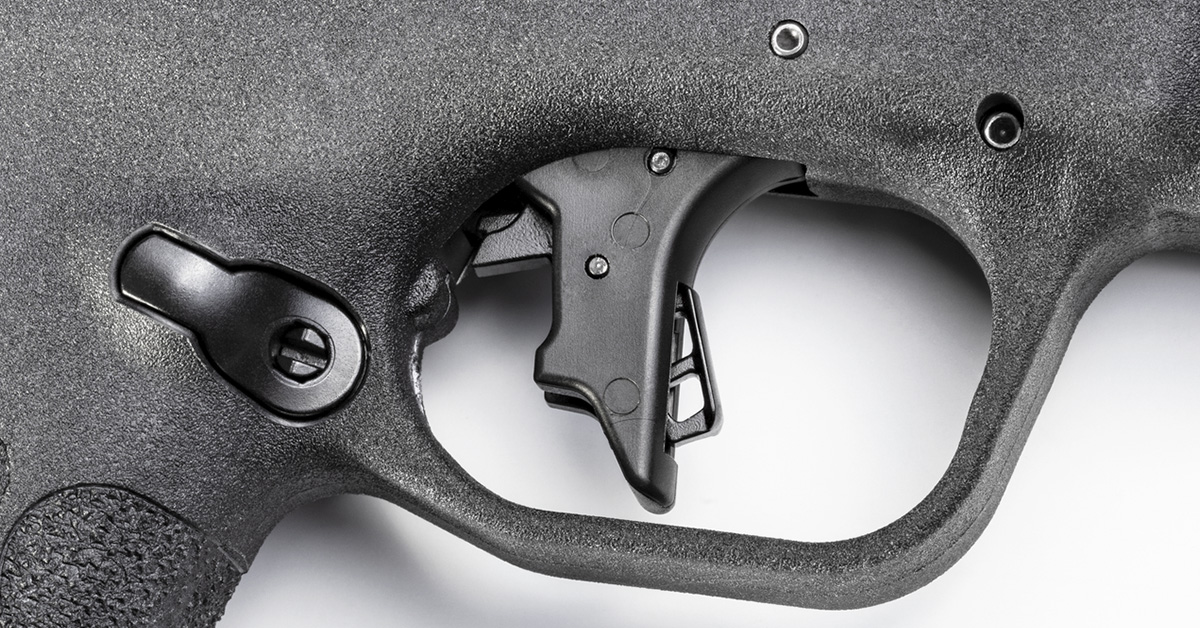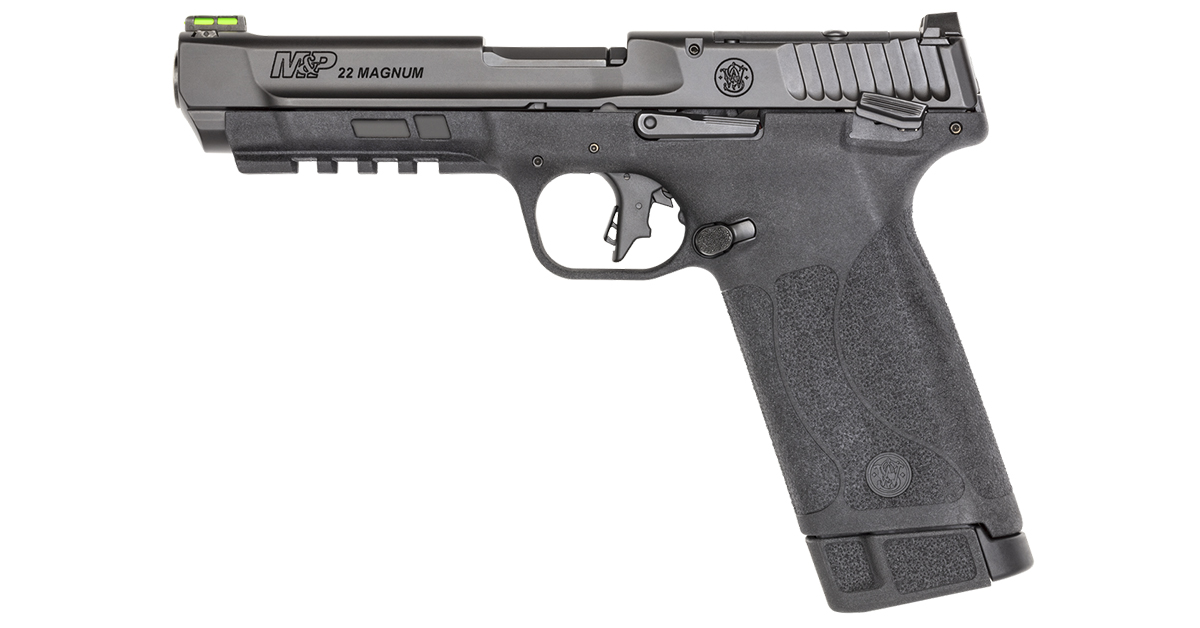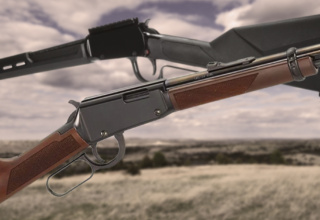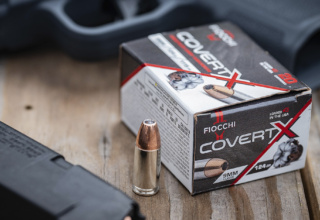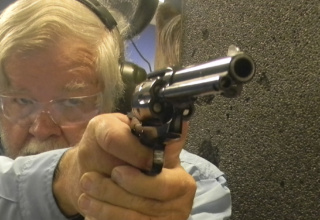Rimfires are fun and when chambered in .22 Magnum, even practical. The S&W M&P 22 Magnum delivers both!
by Bob Campbell
Seldom does true innovation come along. Polymer frames were among these. Optic-ready slides another. A long, long time ago — prior to 1900 — John Moses Browning conceptualized the rotating barrel as he was trying to find a way to make semi-automatic pistols function.
The Smith & Wesson Military & Police .22 Magnum is an innovative handgun with features that make it attractive. This is Smith & Wesson’s entry into this not-so-large market. Sometimes, a pistol creates its own market. At the end of the report, I will compare the pistol to similar handguns, and we’ll see how the Smith & Wesson performs. First, let’s dive deep into the M&P .22 Magnum and explore its design and handling.
First impression: the slide is downright handsome. The black coating over stainless is certain to solve any issues with corrosion. A serrated rib runs between the sights. The front of the slide features a long flat on each side running into a bevel. What looks like a muzzle is actually the shrouded Tempo barrel. The inner barrel is nicely crowned. There are no forward cocking serrations. The cocking serrations at the rear of the slide are well done.
The rear sight is nicely serrated. A set screw is loosened to allow adjusting the sight. The front sight is dovetailed in place. A fiber optic insert is a welcome addition.
The slide features a slide cover at the rear. I don’t feel this item is necessary as the pistol is hammer-fired rather than striker-fired. The frame is polymer. A forward portion is slightly beveled. A modern accessory rail accommodates a range of lights and lasers. The safety is ambidextrous. So is the slide lock. The safety doesn’t lock the slide in place when applied. This means the pistol may be loaded with the safety on. Takedown is simple enough. Tap out the takedown lever as you hold the slide about .25 inches to the rear. This allows removal of the slide lock’s left side component. The slide is bumped forward. The recoil spring and barrel are then removed.
The magazine catch isn’t ambidextrous, although a left-handed shooter may change the magazine catch or simply use his or her index finger.
The trigger is a modern flat type with a safety lever set into the trigger face. The pistol features a firing pin block as well as this safety. A nice mix of adhesion and abrasion were present on the grip frame. The pebbling is ideal for controlling the soft-shooting .22 Magnum cartridge. The trigger action is crisp with a sharp reset. You may hear the reset. According to the RCBS trigger compression gauge, the trigger breaks at 4.0 pounds. The barrel is two-piece. The Tempo barrel system features a 1 in 10-inch twist barrel nestled into an outer shroud. Gas is bled off the barrel near the muzzle. Yep, a gas-operated action. The barrel rotates inside the shroud. This rotation helps shackle recoil. Barrel torque also grabs the spent cartridge case out of the chamber in a positive manner.
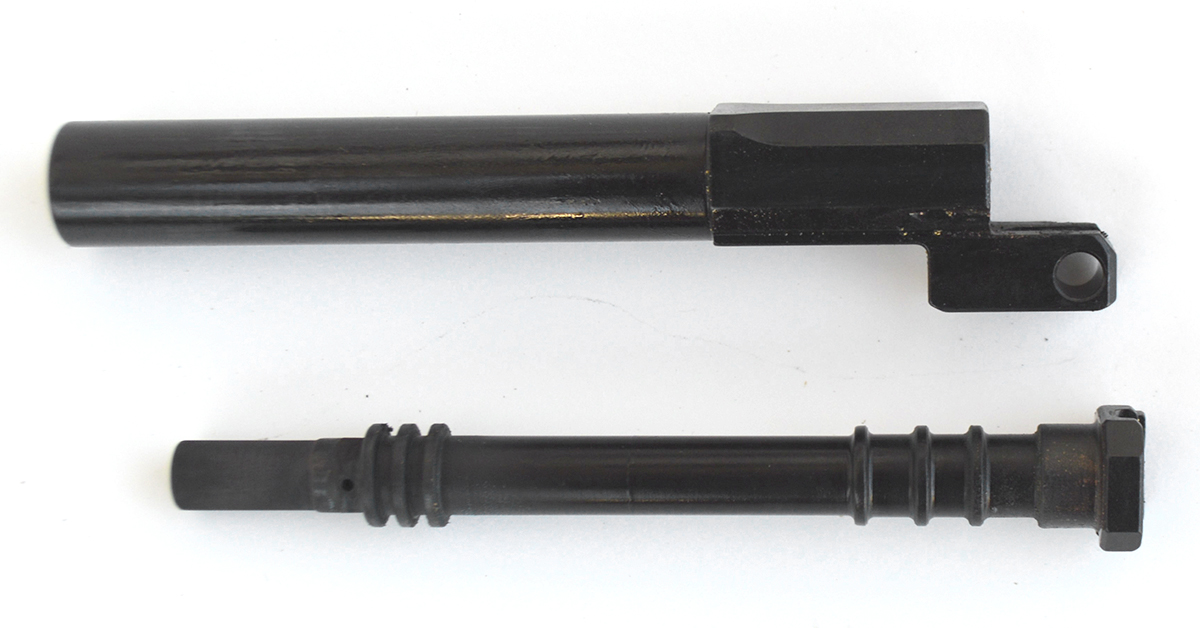
Magazines are the heart of a successful pistol design. These magazines are polymer with an orange follower. The 30-round magazines are easily loaded. Smith & Wesson tells us to load the magazine carefully. My procedure is to load three or four cartridges, making certain the cartridge case rim is fully to the rear by tapping the rear of the magazine. I proceed by loading, tapping, and loading until the magazine is at full capacity. The following cartridge must have its case rim in front of the previously loaded cartridge. Loading to 25 rounds or so was easy enough for all who fired the pistol. While more effort is needed to load to full capacity, I did not resort to a magazine loader.
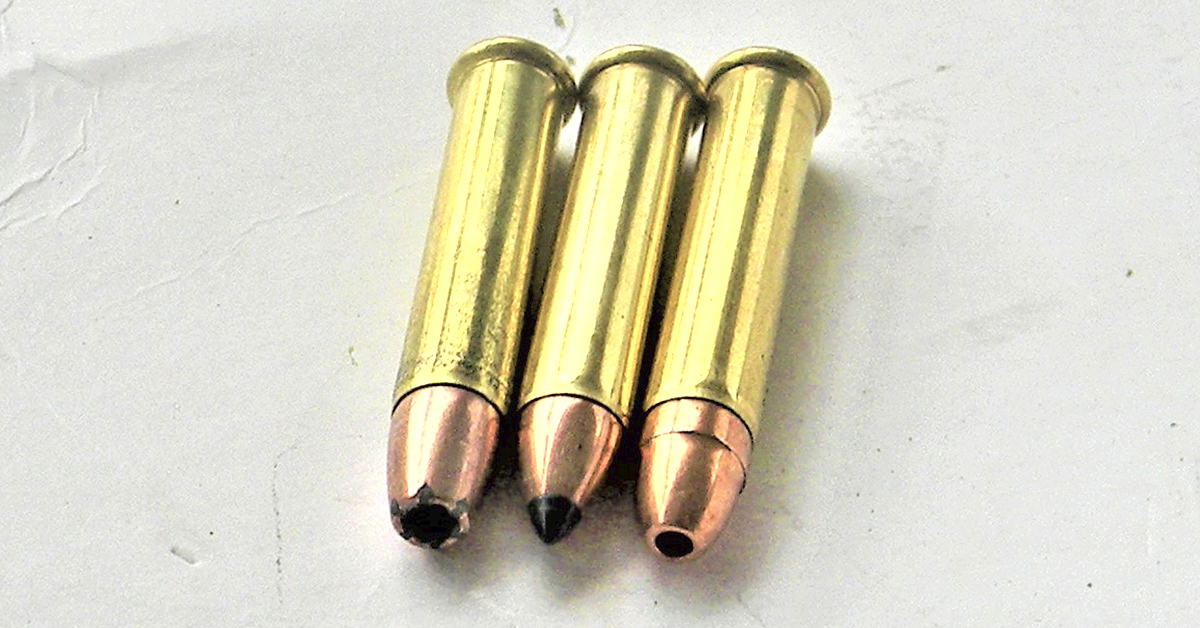
All that was necessary was to collect a likely supply of ammunition. I have couple of Ruger single-action revolvers and keep some ammunition on hand. I added to the test several loads picked up on sale. Not that the ammunition was cheap. Few .22 Magnum loads are found for less than fifteen dollars a box these days. Some are more. Twenty dollars for fifty rounds isn’t unusual for some of the difficult-to-find loads, such as Federal’s Punch. That is as expensive as 9mm full metal jacket ammunition.
In testing this ammunition, bullet weights ran from 30 to 45 grains. Most .22 Magnum loads are designed for use in rifle barrels. As a result, there is unburned powder. This translates to muzzle blast. Not offensive, but the fun kind of muzzle signature. Be certain to wear your shooting glasses, as there is a noticeable amount of powder flakes blown backward. This isn’t present with premium loads.
Federal’s Punch and Hornady’s FTX are designed for use in handguns. Each has low flash and exhibits good function. The makers often publish a list of ammunition that should be used in a .22 Magnum self-loader. Certain loads aren’t dangerous, they just don’t function well. It isn’t the pressure curve. Foreign loads seem to have thinner cartridge cases that get crunched or dented during the feed cycle. Armscor, Fiocchi, and PMC are OK for plinking and practice. Even though the maker might not agree, you may have an occasional tie up. For serious use, a proven reliable loading is recommended. I suppose if you don’t have another handgun, you can get serious with the .22 Magnum.
More on that later.
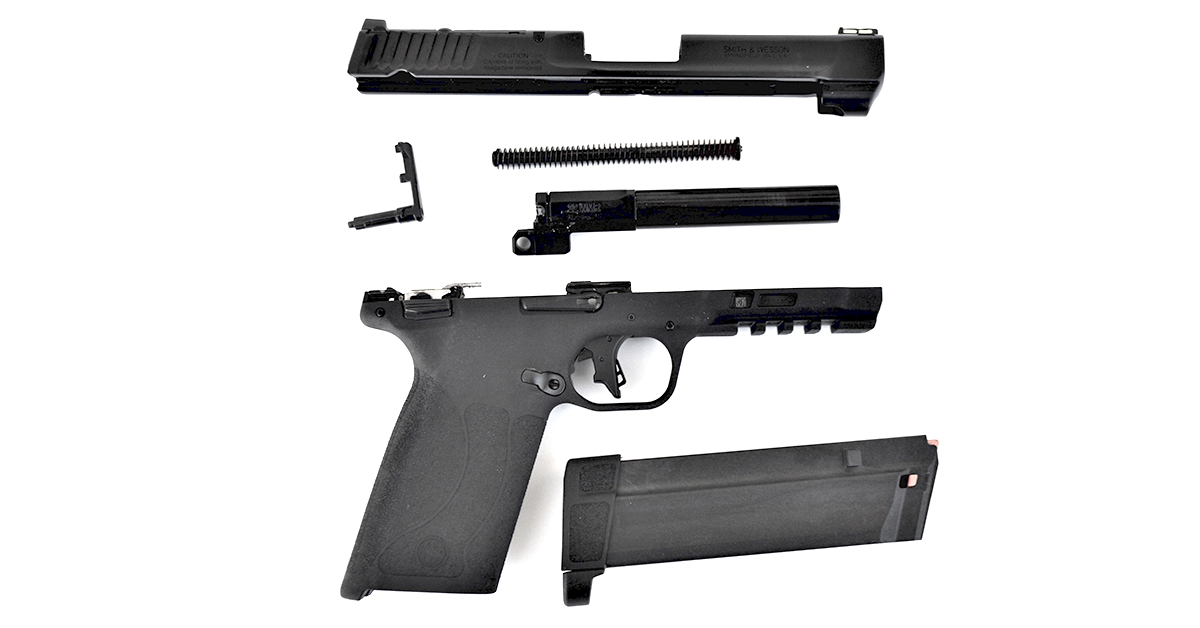
It is refreshing to use such an accurate, light recoil gun. In my personal and professional interests, I fire a lot of handguns, and most are 9mm or larger caliber. With the S&W, I had the sensation of power from the muzzle’s warm orange glow but not from recoil. As for reliability, a propensity to feed, fire, eject, and reload with every press of the trigger is a baseline for a defensive handgun. For a sporting and hunting gun there is not so severe a demand, but the pistol should function reliably.
We had a couple of failures to completely chamber early in the test. I forgot to mark the magazines to isolate a malfunction, but this didn’t really matter as the malfunctions did not repeat. During the test, we had an inexplicable malfunction in which the M&P 22 Magnum fired several cartridges and then the firing pin snapped on an empty chamber. The next round up had failed to feed. I pulled back and released the slide and the pistol loaded normally. The rest of the magazine ran flawlessly. The malfunction rate was a total of around one percent. That isn’t acceptable, but then some were break-in flubs. On the other hand, using CCI .22 Magnum loads, the pistol never failed to cycle normally. Hornady Critical Defense was the same in a smaller sample.
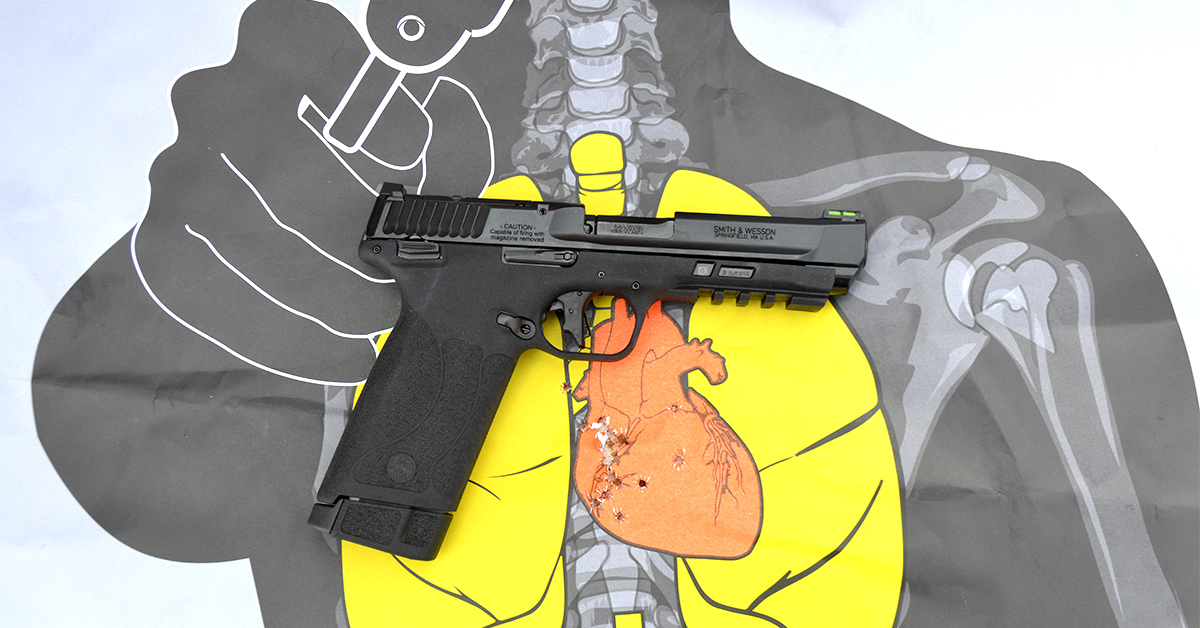
Ammunition performance testing and accuracy tabulating went smoothly. I was not surprised by the 40-grain loads. Most broke 1300 to 1400 fps. Accuracy with all .22 Magnum loads fired from a solid benchrest was a five-shot group of three inches or less. Federal Punch went into less than two inches. Hornady Critical Defense was also a tack driver. The 30-grain loads surprised me. These loads were sizzling hot at 1600 fps. This is extremely fast for a .22 Magnum handgun load. (Hornady’s 30-grain and Federal’s TNT 30-grain averaged about 1530 fps in the Ruger Single Six .22 Magnum revolver with a 6-inch barrel.) Unfortunately, the 30-grain loads were the least accurate tested. Not in a pattern but a group with five shots in three inches at 25 yards. While I prefer 40-grain loads for pistols and use the 30-grain loads in rifles, the lighter load would certainly be a useful short-range pest popper. Just the same, when the standard weight 40-grain loads are reliable and accurate, why rock the boat?
The pistol has proven dependable with the loads it likes in common with most .22 caliber pistols. It is accurate enough for small game. Head shots at close range would be the rule and full metal jacketed ammunition is fine for this role. Groundhogs and other pests, including crows around the farm and garden, are fair game for the .22 Magnum. Bobcats are fair game. Quite a few shooters have only one handgun. You decide which role is most important. For small game and the like, the .22 Magnum is useful. For personal defense, I would not feel naked before my enemies with the .22 Magnum, only underdressed.
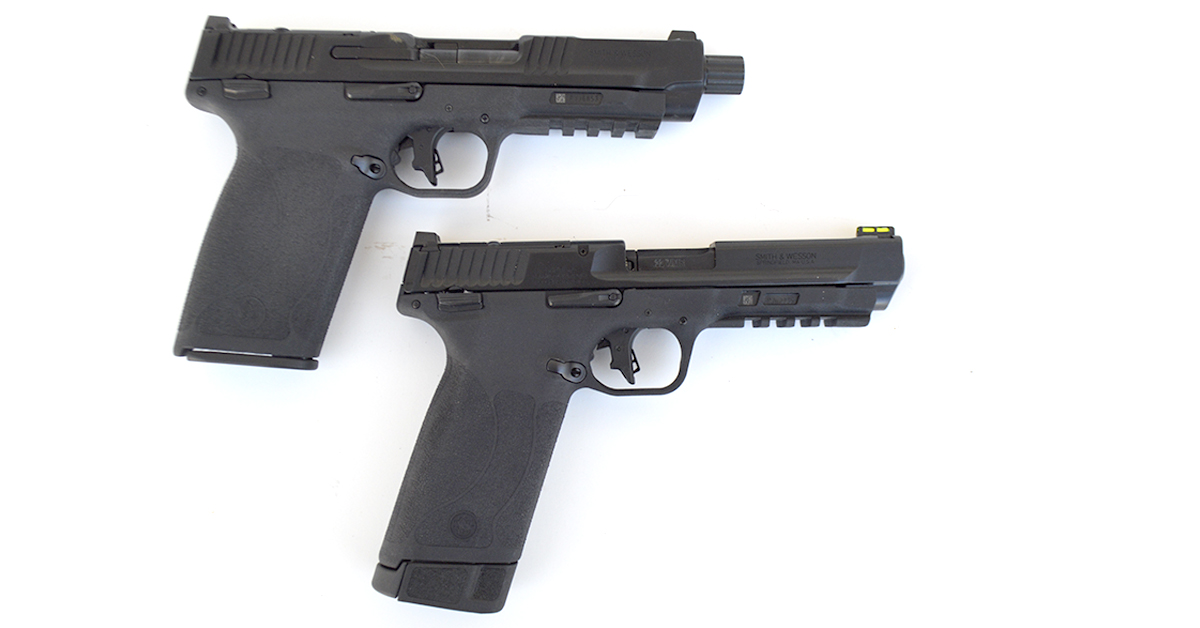
But then the .22 Magnum has plenty of penetration. A 45-grain Critical Defense or Federal Punch has reliability, accuracy, and penetration. Mass and caliber they do not. Those of us who have taken game realize the limits of cartridges and have a well-defined tier of game we would address with a certain caliber. Those like me who have studied wound ballistics — unfortunately at times when the body was still warm — are unimpressed by small calibers. Still, accuracy can make up for power; the reverse is seldom true. The .22 Magnum is accurate, is easily controlled, and you have quite an ammunition reserve. I cannot give a blanket recommendation, but if you have fired 150 cartridges of the type you will deploy without trouble, then reliability is established.
That said, the Smith & Wesson Military & Police .22 Magnum is one of the “big fun” guns of the past decade. I test a lot of handguns. Few have provided as much fun as this one. If we were serious all the time — and safety is always serious — I might find a different job.
The mechanics, performance, and accuracy of this handgun are fascinating. You should have one whether you need it or not.
What I Like
- Just about everything! It is light enough, easy to shoot well, and more accurate than expected. The sights are super cool.
What I Don’t Like
- I think the safety is a little stiff. It isn’t difficult to quickly move to the fire position, but there is a bit of “stiff” going on. When firing a string for accuracy and then placing the pistol on safe, I usually used two hands.
What I Would Change
- If the grip were shorter, maybe I would like the handling better, but then we would not have a 30-round magazine, so I cannot gainsay on that regard.
- Again, a pipe dream, but if we were able to field a five- or six-inch barrel version, we might nip at the heels of some 5.7x28mm loads. The closed chamber beats .22 Magnum revolver velocity from sow to reap.
Compare To…
- I like the KelTec, and the Smith & Wesson is at least comparable. The Walther .22 Magnum is almost as accurate, but the Walther is a bulky gun that should have been smaller. I wanted to like the Rock Island .22 Magnum. It simply isn’t a modern firearm, with all respect to 1911 fans. One Rock Island ran fine while one demanded about ten hours of gunsmithing. The Smith & Wesson should stand on its own merits.
Smith & Wesson M&P 22 Magnum Specifications
- Type: Internal hammer-fired semiauto
- Cartridge: .22 WMR
- Capacity: 30
- Barrel: 4.35 in.
- Overall Length: 8.4 in.
- Width: 1.3 in.
- Height: 5.9 in.
- Weight: 22 oz.
- Finish: Black Armornite
- Sights: Adjustable rear notch, fiber optic dovetail front, optics cut
- Trigger Compression: 3 lbs.

